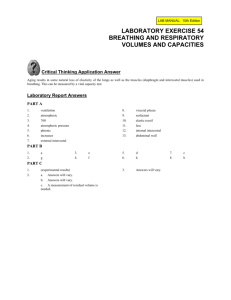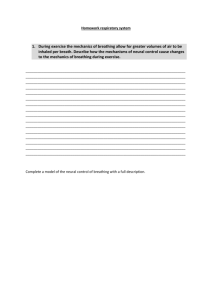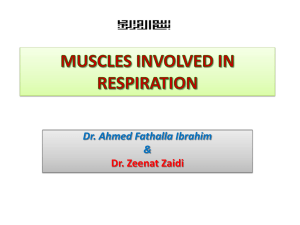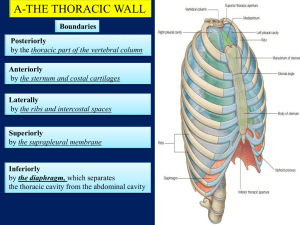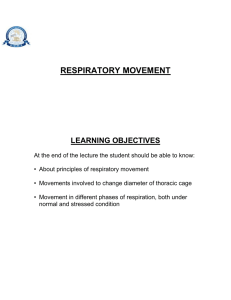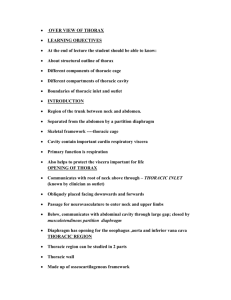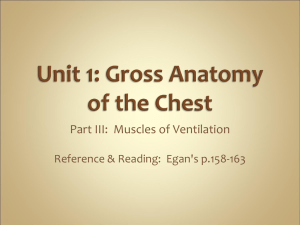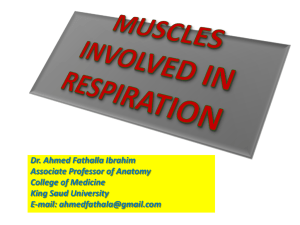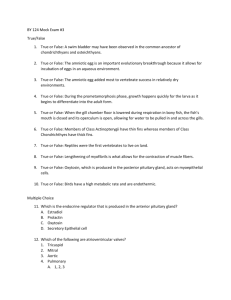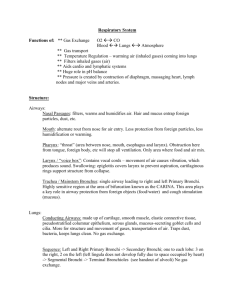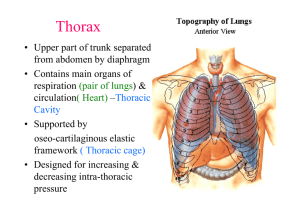Respiratory System
advertisement
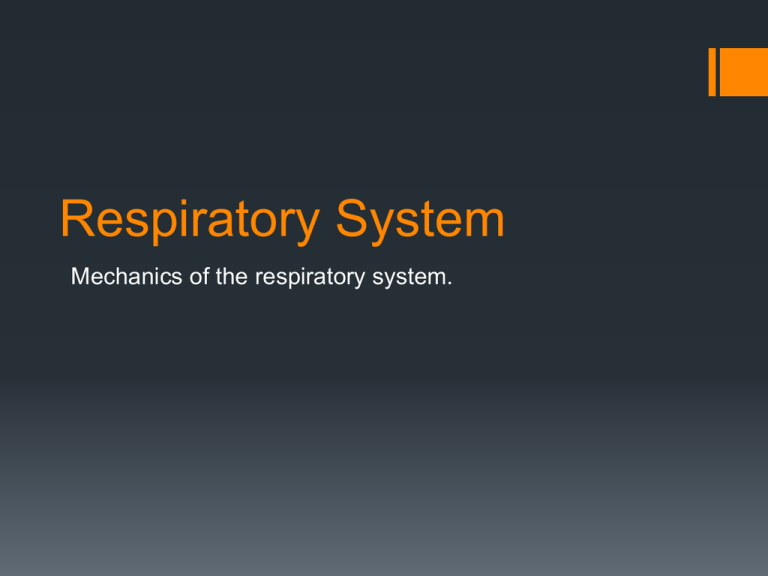
Respiratory System Mechanics of the respiratory system. Is respiration active or passive? In pairs note your answer and then state the reasons why on the white boards. Objective Know if respiration is active or passive. Know the mechanics of respiration. Apply mechanics to an exercise situation. Assumed prior knowledge Name 1 2 3 4 5 6 7 8 9 10 11 Nasal cavity Mouth Larynx Lungs R/Bronchus Diaphragm Pharynx Trachea L Bronchus Bronchiole Alveoli Which ones did I know Lungs have pleural membrane filled with fluid To reduce friction. Connects ribs to lungs Diaphragm External intercostal muscles Easy way to remember the mechanics of respiration Muscles, what are they doing, active contraction or relaxation. Movement – of the ribs and sternum and abdomen. Thoracic cavity volume, either increase or decrease which causes. Lung volume to decrease or increase, which causes Inspiration or expiration Pairs task Using the support of MMTLI explain inspiration and expiration. Inspiration Expiration Diaphragm contracts (active) flattens External intercostal muscles contract (active) Diaphragm relax (passive ) flattens External intercostal muscles relax (passive) Ribs and sternum move up and out Ribs and sternum move in and down Thoracic cavity volume increases Thoracic cavity volume decreases Lung air pressure below atmospheric pressure decreases below air (outside) Lung air pressure increases above atmospheric pressure air (outside) Air rushes into lungs Air rushes out of lungs Application and progression Inspiration Expiration Diaphragm contracts (active) flattens External intercostal muscles contract (active) Sternocleidomastoid contracts (active) Pectoralis minor contracts (active) Diaphragm relax (passive ) flattens External intercostal muscles relax (passive) Internal intercostal muscles contract (active) Rectus abdominus /oblique's contract (active) Ribs and sternum move up and out with more force Ribs and sternum pulled down, Increased thoracic cavity volume Greater decrease in thoracic cavity volume Lower air pressure in lungs Higher air pressure in lungs More air rushes into lungs More air rushes out of lungs Exam Question A B With reference to the mechanics of breathing describe how the cyclist is able to inspire great amounts of oxygen during the training ride. [4] Describe how the mechanics of breathing alter during exercise to expire greater volumes of carbon dioxide. [4] Answer A 4 marks maximum (inspire) 1External intercostal muscles contract with more force 2Diaphragm contracts/flattens 3More muscles involved/ pectoralis minor sternocleidomastoid/scalenes 4Rib cage lifted further up and out 5Pressure of thoracic cavity is decreased 6Volume of thoracic cavity increased B 1.This process becomes active 2.Due to internal intercostal contracting 3.Abdominal muscles contracting 4.Diaphram pushed up harder/rib cage pulled in and down 5.Decrease in volume of thoracic cavity 6.Causing an increased pressure within thoracic cavity End
